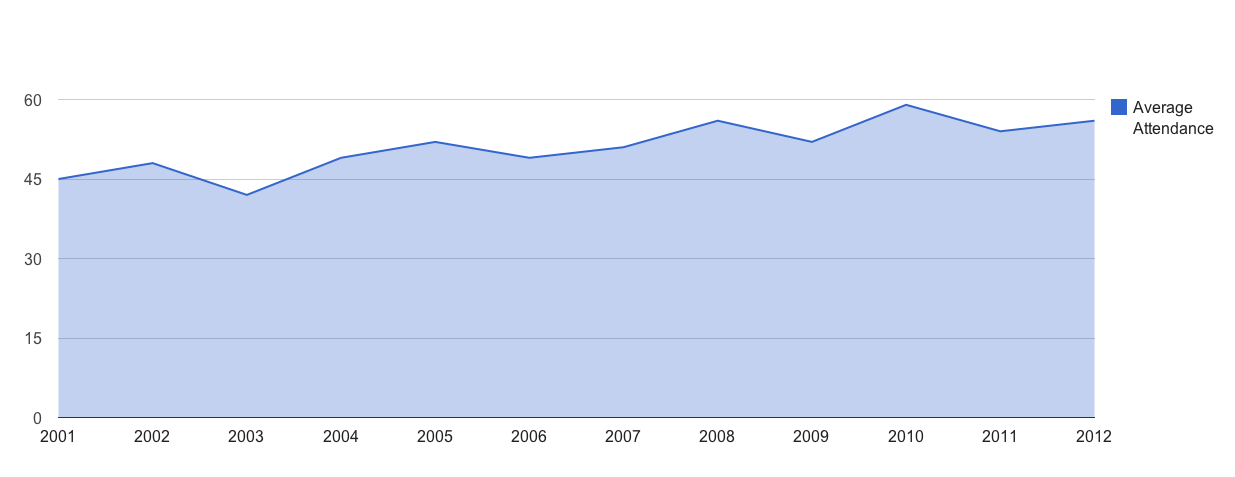If I were to plot out the average youth ministry attendance in a local church this is probably what it would look like.
So when I say, “The way you are doing ministry is failing to reach students. It’s not you, it’s your strategy.” Youth workers look at me and say, “No, that’s not true. We are actually reaching more students than we were 10 years ago with less budget.”
And from their vantage point, looking at that one view of the population of adolescents in their community, they could be right. They are reaching 10-15% more students than they were 10 years ago.
Flatlined growth
However, when you compare students engaged in youth ministry to the overall student population in your school district it looks a lot like this.
This is what I mean by “you are failing to reach students with the programs you currently offer.”
Statistically speaking you are flatlined. (As in– no heart beat!) You’re reaching just about the same percentage of people you’ve always reached. That may be OK from a church politics situation but I’m not sure I’m OK with that from a theological position.
And I’m positive that this flatlining has lead to the following problems in youth ministry over the last decade:
- A general cynicism about youth ministry internally and externally.
- A decrease in youth ministry staff and general budget funding.
- An increase in expectations that new youth ministry staff grow the program immediately.
- Lots of great youth workers moving on to other ministries or careers.
- The rise of family ministry models designed to circle the wagons. (Historically, youth ministry existed for evangelism. Popular models today are primarily interested in keeping church families engaged.)
Students are involved… just not in youth ministry
According to this 1995 study, 79.9% of all high school students were involved in an after school activity. I know that this study is 17 years old– but we would all agree that that percentage likely hasn’t changed much in 20 years, correct? (Maybe +/- 10%)
Every youth ministry strategy I know of is trying to wedge their way into this pie graph. They are looking for students, ultimately, to forego involvement in one of the programs at the school and invest in their program.
After nearly 40 years of youth ministry we know that this isn’t going to happen. Even the best youth ministry program model might only wedge their way in there by 2-3% of total student involvement.
A theologically appropriate number of students are not going to stop involvement in other things to get “fully engaged” in a local youth ministry program. And even if they did this it wouldn’t be a good strategy for continued growth, would it?
It’s 2012. You have flatlined for the past decade. Are you ready to try a new strategy?
This is why it is said: “Wake up, sleeper, rise from the dead, and Christ will shine on you.”
Stay tuned, subscribe via RSS or get my daily email. This year we are going to look at new youth ministry strategies that are breaking this model and reshaping the way students engage with Jesus.




Leave a Reply